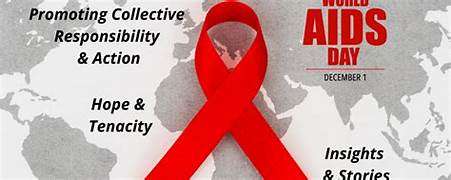Why HIV Testing Technology Could Help Lesotho Achieve 100% ARV Treatment Coverage
…As the world prepares to commemorate World AIDS Day on December 1, Lesotho is harnessing advanced HIV testing technology to swiftly identify new infections and enrol affected individuals on antiretroviral treatment. This innovative approach has the potential to identify high-risk populations promptly and mitigate the spread of new HIV infections.
19 October 2023 by Limpho Sello

Today, Lesotho proudly claims the status of being one of the leading nations in HIV treatment. It has surpassed the 90 percent target set by the Joint United Nations Programme on HIV and AIDS (UNAIDS) for enrolling adults who are aware of their HIV status in antiretroviral treatment.
In 2021, the Lesotho Population-based HIV Impact Assessment of 2020 (LePHIA 2020) survey revealed that Lesotho had achieved an impressive 97 percent ARV treatment coverage among adults who were aware of their HIV status. Furthermore, Lesotho has excelled in two of the UNAIDS 90-90-90 targets: ensuring that 90 percent of adults living with HIV in Lesotho are aware of their HIV status, and that 92 percent of adults receiving antiretroviral treatment maintain suppressed viral loads.
According to an article by ICAP Global Health, these results demonstrate the critical role that LePHIA 2020 played in providing data that informs and strengthens the country’s national HIV policies and programs to achieve global targets.
In its ongoing efforts to enrol HIV-infected individuals into treatment, Lesotho has adopted the use of HIV testing technology to trace recent HIV infections. The technology, known as the Recent Infection Testing Algorithm (RITA), is a laboratory-based HIV test that distinguishes recent HIV infections from those that have persisted for over six months.
Research indicates that RITA is primarily used to monitor new HIV infections in the population. However, it should be noted that this technology can identify whether a person was infected within the past six months but is not accurate enough to determine the exact day of HIV infection.
According to Lisebo Ralepoma, HIV clinical mentor with the Maseru District Health Team (DHMT), Lesotho began utilising RITA in infection surveillance in August 2019 in Leribe and April 2022 in Maseru.
Health officials engage community leaders
Recently, community leaders within the Maseru district were informed that nightclubs, abandoned houses, hostels, and car washes were allegedly being used as venues for unprotected sexual activities in the Ha Thamae area of Maseru. Ha Thamae, along with Qoaling, has been identified as a hotspot for new HIV infections.
Ralepoma explained, “It has been discovered that there are two nightclubs and abandoned houses in Ha Thamae. Inebriated individuals utilise these abandoned houses for unsafe and unprotected sexual activities, putting them at a high risk of HIV infection.”
“Moreover, there are numerous hostels in the area rented by students and factory workers, as well as car washing businesses, where people gather to consume alcohol. These factors contribute to the high incidence of HIV infections in the area,” Ralepoma said during a recent meeting with community leaders in Maseru.
In an interview with Uncensored News, Ha Thamae assistant chief Makae Ramakau noted that the area is grappling with issues of alcohol and drug abuse. Under the influence of these substances, individuals tend to engage in unprotected sexual activities, exposing themselves to the risk of HIV infection.
Ramakau emphasised the importance of using condoms as a preventive measure, though even when available in nightclubs, they are often underutilised. Engaging in unprotected sex with an HIV-positive partner increases the risk of HIV transmission. According to researchers, the use of RITA helps identify risk factors for recent infections and assess the impact of prevention programs.

Lisebo Ralepoma is a HIV clinical mentor at Maseru District Health Team. Credit: Lisebo Ralepoma.
Ralepoma disclosed that RITA testing technology revealed there were fewer than six-month-old HIV infections in the Thamae area, leading the Maseru District Health Team to declare Thamae and Qoaling as new HIV infection hotspots.
In the period from January to March 2023, Maseru registered a 12 percent positivity rate, while the second quarter of April to June 2023 saw a ten percent positivity rate. Ralepoma stated, “From January to March, 8,224 people were tested for HIV, with 999 testing positive and 1,237 initiated on ARV treatment.”
Among the 1,237 individuals initiated on treatment were those who had previously tested positive but were not immediately enrolled in treatment for various reasons.
“In the second quarter of 2023, 8,134 people underwent HIV testing in Maseru, with 810 testing positive and 950 initiated on ARV treatment. The positivity rate gradually declined from 12 percent in the first quarter to ten percent in the second quarter,” she said.
The number of individuals initiated on ARV treatment exceeded the number of those who tested positive between April and June because it included individuals who were not immediately enrolled in treatment after testing positive, highlighting the importance of timely treatment initiation.
According to Ralepoma, RITA testing technology indicates that 108 of recent infections occurred within six months of HIV testing. Of these, 86 were female, and 22 were male, emphasising the need for targeted interventions.
With Lesotho on track to surpass the UNAIDS 90-90-90 targets, RITA is not only aiding health officials in identifying new infections but also helping the country devise innovative strategies in its fight against HIV.
According to a study titled “Health Protection Surveillance Centre HSE Sexual Health & Crisis Pregnancy Programme,” published in October 2016, RITA is primarily used to estimate the incidence of new HIV infections in the population.
“As HIV infection usually doesn’t cause symptoms in the beginning, an increase in HIV cases may be due to either: new infections, or better testing and detection of cases that have been present for some time,” reads the study.
The study indicates that RITA aids countries in identifying new infections for several reasons. It enables the targeted allocation of resources to those most in need, contributes to the monitoring and evaluation of HIV prevention initiatives and testing strategies, and helps predict changes in the total number of people with HIV (prevalence) over time.
Limitations
However, RITA is not without its limitations, as highlighted by the authors of the Health Protection Surveillance Centre HSE Sexual Health & Crisis Pregnancy Programme. Variations in immune systems and other factors, such as the presence of other infections during testing or past use of medication for HIV transmission prevention, can affect RITA results.
A study conducted in Zimbabwe and Kenya and published in June 2022 noted challenges in returning RITA test results to clients due to delays in laboratory testing, the need for multiple test results to satisfy RITA requirements, difficulties in aligning clinic visits, and participants opting not to return for test results.
The study, titled “Experiences and Lessons Learned from the Real-World Implementation of an HIV Recent Infection Testing Algorithm in Three Routine Service Delivery Settings in Kenya and Zimbabwe,” offers valuable insights for those working on the implementation of HIV recency testing in sub-Saharan Africa.
Meanwhile, Ralepoma pointed out that recent surveys have revealed intergenerational sexual relationships between older men and girls born in the past two decades, contributing to new HIV infections. The identification of new or known HIV infections through recency testing (RITA), together with geospatial mapping, enables targeted HIV prevention and treatment efforts in communities experiencing increased transmission, as well as strengthening partner notification to reduce the number of new infections.
Based on evidence from the first quarter of the year, Ralepoma reported that the HIV district committee resolved to increase the distribution of condoms to all hotspots and clinics across the district. The Maseru District Health Committee also plans to continue health education campaigns in schools, churches, and public gatherings. There are initiatives to provide HIV prevention commodities like pre-exposure prophylaxis (PrEP) and door-to-door HIV testing in the district.


2 Comments
Interesting read as always
Thanks for sharing. I read many of your blog posts, cool, your blog is very good.